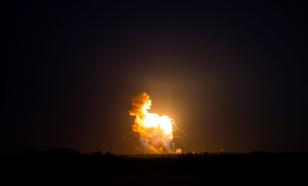The ESA's Cryosat spacecraft was lost minutes after lift-off from the Cosmodrome
Space agencies are investigating why a rocket carrying a European mission to map polar ice fell into the ocean. The European Space Agency's Cryosat spacecraft was lost minutes after lift-off from the Plesetsk Cosmodrome in northern Russia on yesterday evening.
Russian officials say an error caused the rocket's second stage to run out of fuel, so it could not eject the probe. The Ј90m (135m euro) craft was designed to monitor how the Earth's ice masses are responding to climate change.
The Esa satellite was launched at 19.02 local time (16.02 BST), but mission controllers failed to make contact with the spacecraft as planned some two hours later.
Russian space officials said that both the spacecraft and the two top parts of its rocket had fallen into the Arctic Ocean, north of Greenland.
The satellite was launched on a Rockot vehicle - a converted SS-19 intercontinental ballistic missile. The rocket, which in the Cold War would have been armed with nuclear weapons, had been modified with the addition of a Breeze-KM upper stage.
The loss of Cryosat brings an uncertain future for the teams of scientists and engineers working on the mission.
Cryosat was to be the first in a series of Earth Explorer missions planned by Esa. The satellite missions are designed to be quicker and cheaper than their predecessor, Envisat, a giant earth-monitoring satellite which took more than a decade to build.
The second Earth Explorer, a satellite to measure the earth's gravitational field, is due to be launched on a Rockot vehicle next year.
The launcher had flown six successful missions before the loss of Cryosat, its first Esa payload, reported BBC News.
P.T.
Subscribe to Pravda.Ru Telegram channel, Facebook, RSS!


